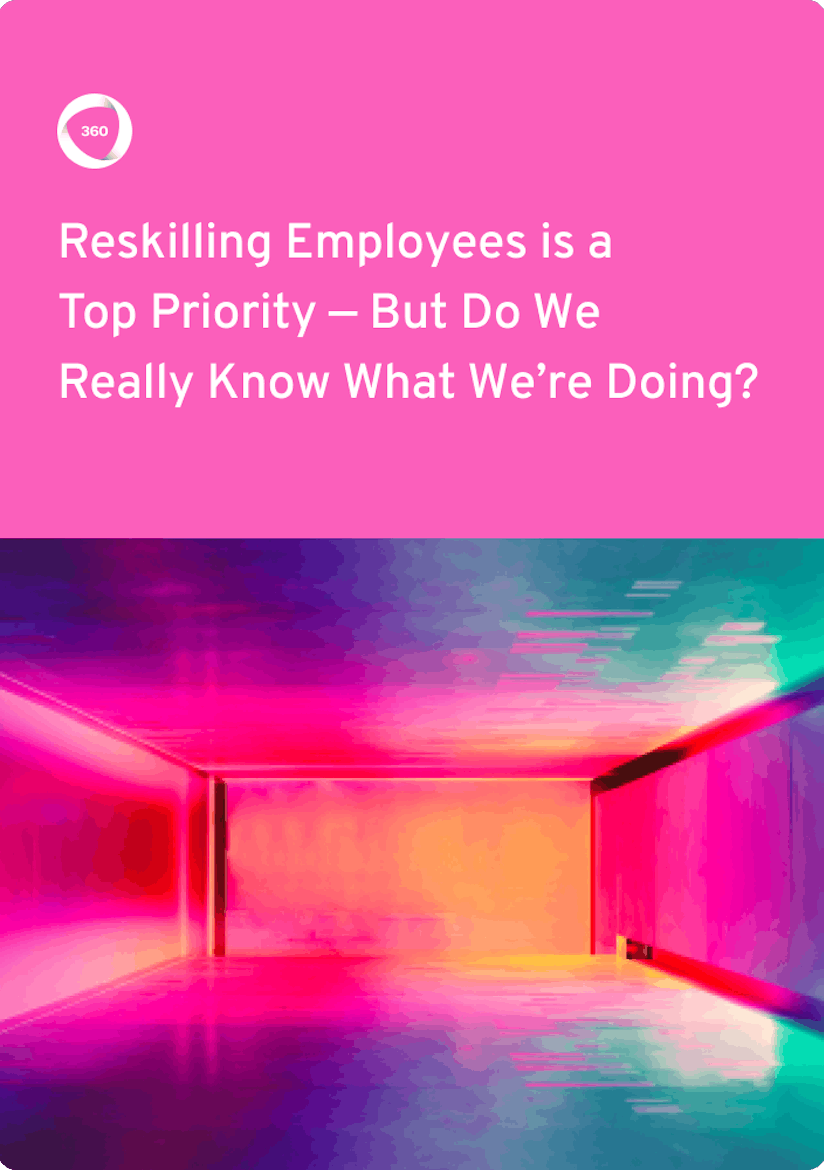
Discover the learning platform powered by collaborative learning.
A 15-minute discussion with an expert
100% tailored to your needs - with ❤️
No commitment. Free as can be.
Upskilling and reskilling employees are both critical to ensure you have an engaged, productive, and long-lasting workforce.
But while most companies have some form of learning and development initiative in place, far too few place enough emphasis on skills.
Skills-based learning is now simply the best approach for modern organizations.
This article provides an introduction to skills-based learning, highlights its benefits, and shows how new technology takes much of the slow, manual work out of building a skilling strategy.
Skilling is the exercise of equipping your workforce with the skills and knowledge to fulfill necessary tasks. This ongoing process requires a clear strategy and the right tools to make it successful.
Organizations regularly engage in two key forms of skilling:
Upskilling and reskilling are core aims for learning and development (L&D) teams. And more broadly, they help to instill a company-wide culture of continuous career development and increased performance.

By providing your contact info, you agree to receive communications from 360Learning. You can opt-out at any time. For details, refer to our Privacy Policy.
This focus on upskilling and reskilling at scale is relatively new in the L&D world. The key shift is to stop thinking of employees only as their job titles, and stop building skilling strategies down strict verticals.
For example, your learning library could include courses and assessments on the following skills:
Managers and their teams can determine which of these skills is most relevant to their roles, and what level of proficiency is required.
A salesperson might need to be Expert in 1, 5, 6, and Intermediate in 2. A marketer might need to master 2, 4, and 6, while an HR professional might need serious prowess in 1 and 6. This can vary from person to person, manager to manager, and team to team.
Crucially, learning content and assessments must be contextual to the organization and the specific role, and developed with in-house subject matter experts. This collaborative learning approach — anchored on skills — is key to nurturing talent for the future.
Organizational skilling has a wide lexicon of important terms and concepts to understand. Here are just a few that you'll encounter regularly:
In previous eras, L&D leaders focused on “competencies,” “behaviors,” and “capabilities” to define how organizations wanted their teams to act.
Competencies and capabilities were created to inform and influence job descriptions. These were the things to look for in an ideal candidate, and then used for ongoing performance management. Most importantly, they were mostly uniform across companies.
“Skills” don't come from the same place. These are much more tangible, and based on what is actually required to do the job in your company.
A skills-based approach has several benefits for companies:
But perhaps the biggest benefit is seen in employee retention. According to Deloitte companies with a skills-based approach to learning are 98% more likely to retain top staff.
According to Deloitte companies with a skills-based approach to learning are 98% more likely to retain top staff.
It’s easy to claim that any number of initiatives will help you keep employees for longer. But a skills-based learning strategy promises to deliver more than new swag, nap rooms, and better IT equipment.
Plenty of companies state that L&D is a key focus. But traditional approaches to L&D often amount to X number of days per employee of training per year, and $Y spent per employee.
This looks like a good deal on the surface. But the reality is oceans of generic online content and full-day programs that are barely related to the organization, let alone a particular skill set. This is especially a challenge for enterprise level organizations trying to pivot to skills-first approach.
Skilling lets you meet employees where they are in their development, and propels them towards their next role. Making people more employable — both internally and externally — is far more meaningful than any perk.
Skills-based learning measures skills and their application in a specific role. That’s good for the individual and great for their manager, as it gives logical next steps to work towards.
Why leave an organization when your growth is so aligned to your performance and future prospects?
Upskilling and reskilling are core objectives for most learning and development programs. But why such an emphasis on learning in the first place, and particularly on skills?
The benefits of a learning and development strategy are clear:
Those five points are really just scratching the surface. Skilling can have a profound impact all across your workforce.
But having a strategy is crucial. Great workplace learning is intentional, and requires leadership buy-in and the resources to execute it. It doesn’t just happen by accident, at least not for the long term.
As with virtually any strategy in life, the best time to start was yesterday; the next best time is now. Skilling programs take time to create, implement, and complete. And you can’t afford to get started when you’re already facing a skills and talent shortage.
You don’t need a shortage to see real benefits from a skilling scheme. As we know, continuous learners are:
So for the company overall, you’re more likely to keep your best performers performing, and for longer. You also build a more adaptable and resilient company, with new skills constantly being developed across the organization.
But if you try to do this reactively — upskilling or reskilling only when your needs are most profound — you’re already behind the ball. People are stretched, the mood may be low, and it’s a much tougher climb to instill a culture and learning and progression in these circumstances.
Skills-based learning has struggled to take hold in the past. This is for a few reasons:
These were all completely valid issues just a few years ago. But AI-powered tools have completely upended this dynamic. What used to be a slow, difficult process is now largely automated.
AI-augmented L&D tools can help L&D professionals:
Automating these largely operational aspects of an L&D manager’s time lets you roll out skills campaigns dynamically. Where the bottleneck was time and energy, both issues are completely solved by AI tools.
L&D leaders can instead focus on how the strategy is performing, and prove that their efforts bring real return on investment for the company.
If the above sounds good to you, we humbly suggest you try SkillsGPT. It makes it easy for any L&D leader to identify skills gaps fast.
Plus, your skills ontology is continuously up-to-date. You avoid one of the biggest issues facing most L&D teams: by the time you launch your skills plan, it may already be out of date.
But enough preamble. Here’s SkillsGPT in action:
You can find SkillsGPT in the app store. As Sarah Marinho, Talent Development Manager in the real estate development industry says, "SkillsGPT is one of the few tools that's directly actionable and practically free. It saves us a lot of time to build a skills ontology, without the need to call in an external consultant or for our staff to spend half a day in workshops. The HR professionals I've spoken to about it are blown away!"
"SkillsGPT is one of the few tools that's directly actionable and practically free. It saves us a lot of time to build a skills ontology, without the need to call in an external consultant or for our staff to spend half a day in workshops. The HR professionals I've spoken to about it are blown away!" - Sarah Marinho, Talent Development Manager
Ongoing skilling is one of the keys to a high-performing, more engaged, and longer serving workforce. But most companies struggle to keep their strategies up to date and tailored to an ever-evolving workforce.
New technology — and AI in particular — unlocks a skills-focused approach to company learning and training, without the time and resource commitments this previously required. The result is fast, flexible, and future-proofed L&D.
Build your skilling strategy today with Skills by 360Learning.
A 15-minute discussion with an expert
100% tailored to your needs - with ❤️
No commitment. Free as can be.
By providing your contact info, you agree to receive communications from 360Learning. You can opt-out at any time. For details, refer to our Privacy Policy.